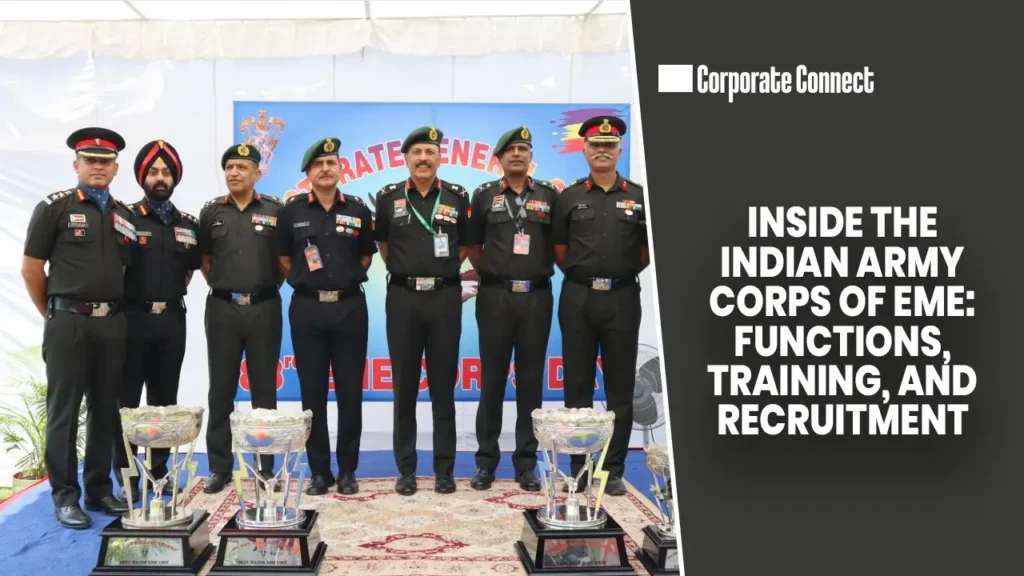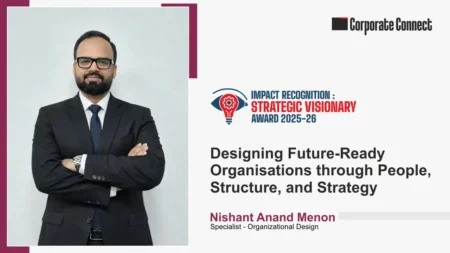Inside the Indian Army Corps of EME: Functions, Training, and Recruitment
Written By Jaya Pathak
The Corps of Electronics and Mechanical Engineers (EME) is the technical backbone of the Indian army. It is responsible for keeping the combat power alive across the seasons and operational conditions. Either it is a tank or an air defence system. The corps of electronics and Mechanical Engineers sustains repairs and upgrades the equipment so that it can give fighting our missions their edge. In the error defined by sensors software and precision, the corps of electronics and Mechanical Engineers remains as a silent force multiplier as it converts engineering rigor into operational readiness to a large scale.
Design, trials, and indigenization
The corps of electronics and Mechanical Engineers is a critical stakeholder in the induction process as well as trials and validation for the new system. The safety reliability and maintainability are being evaluated during the pre-induction phase. It works with industry as well as other incubators and develops alternative for obsolete parts. This approach enhances the sovereignty in the supply chains and stabilizes availability rates.
Officer induction and branch training
Commissioned officers join the branch through regular accessions and technical entries. The graduate engineers are commissioned via permanent as well as short Service Commission. Their induction is followed by pre commissioned training at academies as well as branch courses that certify them all army platforms and field procedures. In the early phase, officers are exposed to unit lines, field detachments as well as workshop environments. The mid-career officers are exposed to education including staff project as well as quality management learning and are given exposure to industry practices so that they can improve interoperability with suppliers.
Soldier and JCO trades
At the soldier and junior commissioned officer levels, the Corps hires for applied technical trades including vehicle mechanic, electronics mechanic, armament artificer, instrument technician, refrigeration and air conditioning, and power generation. Training emphasizes hands-on proficiency, tool discipline, fault-tree reasoning, documentation, and the ability to function under time penalty. Certification regimes are strict and periodic, ensuring that trade currency remains aligned with fast-evolving equipment baselines. Many trades are stackable, enabling progression from line maintenance to supervisory roles and advanced diagnostics.
Career development and specialization
The EME career lattice rewards specialization built on field credibility. Command in the Corps is built on technical leadership anchored in people leadership, reflecting the reality that repair outcomes depend as much on teamwork and morale as on tools and manuals.
Recruitment overview: officers
For officers, the Army’s selection system combines academic eligibility with psychological assessment, group tasks, and interview evaluation by the Services Selection Boards. Engineering graduates in specified disciplines are considered for technical commissions subject to age, medical standards, and degree recognition. Successful candidates undergo academy training that fuses fieldcraft with leadership, followed by branch courses that qualify them for EME appointments. Lateral opportunities exist for both permanent and short service cadres to pursue advanced studies, certifications, and interagency assignments.
Recruitment overview: Soldiers and Agniveers
At the soldier level, recruitment targets candidates with higher secondary science streams, diplomas, or ITI credentials aligned to technical trades. The process involves standardized tests, physical fitness evaluation, medical screening, and documentation verification before trade allocation and training. Under the Agnipath framework, initial engagement is for a fixed period with a subset offered continuation based on performance and organizational needs. Technical roles mainly emphasize on mathematics, physics as well as worship attitude and the on-job training is supplemented by recognized industry certification so that soldiers can enhance employability over the long period of time.
Partnerships with industry and academia
The corps engages with public as well as private industry so that it can Co develop solutions for enhancing the performance as well as controlling the cost. Academic partnerships bring research methods to field problems, whether in power electronics, control systems, materials fatigue, or cybersecurity. These collaborations reduce dependence on imports, compress turnaround cycles, and improve end‑user satisfaction.
Logistics, spares, and inventory discipline
Repair excellence is inseparable from logistics excellence. The EME works with logistics arms to rationalize spares holdings, codify parts, and eliminate counterfeit risk. Data from repair histories underpins stocking levels, reorder points, and vendor performance ratings. Where demand is spiky or lead times are long, the Corps uses repairable pools and controlled cannibalization policies to avoid equipment loss without compromising airworthiness or safety on critical systems. Inventory discipline also guards against waste, which has direct budgetary implications in public finance.
Innovation at the edge
Field detachments often innovate under constraints, developing jigs, toolkits, and procedures that shave hours from repair time or avoid evacuation of equipment. Many such solutions graduate into formal technical instructions after validation, proving that disciplined bottom‑up innovation is compatible with military standards. Low‑cost sensors for predictive alerts, modular harnesses for faster replacements, and field‑ready diagnostics for harsh climates are examples of grass‑roots ingenuity that scale across theatres.
People, culture, and performance under pressure
The Corps invests heavily in human factors: fatigue management, shift design, fault-reporting culture without stigma, and mentoring for young technicians facing their first high-stakes recoveries. Performance in the EME is measured not only by machines restored but by repeatability, safety record, and adherence to standards. The culture prizes quiet competence—taking pride in sending equipment back better than it arrived and documenting the work so the next team is faster.
Why EME matters to the economy
Reliable military equipment preserves deterrence and reduces long-term cost by extending platform life, compressing downtime, and curbing import dependence for spares. Indigenization projects generate demand for domestic suppliers and stimulate advanced manufacturing. Training pipelines produce technologists with transferable skills in electronics, power systems, controls, and quality—capabilities that harmonize with national skilling priorities and the wider industrial base. In short, the Corps’ discipline in asset management, repair economics, and standards compliance is a public value proposition, not just a military one.
Preparing for a career in the EME
Aspiring officers should prioritize a strong foundation in core engineering subjects, hands‑on project work, and the communication skills required to lead mixed trade teams in stressful conditions. Aspiring soldiers and Agniveers benefit from workshop exposure, ITI or diploma credentials in relevant trades, and fitness standards that allow sustained field performance. Across roles, integrity in documentation, attention to safety, and a learning mindset are decisive differentiators during selection and training.
The road ahead
As army is integrating software defined radios, electronic warfare suites and hybrid electric platforms, Electric and Mechanical Engineers’ role is expanding from maintenance to system integration and cybersecurity at the edge. The Corps is well positioned for this future: its institutional memory, training depth, and culture of precise execution are exactly what complex, software‑intensive forces require.
Conclusion
The Corps of EME is where engineering meets readiness. Its functions stitch together recovery, repair, overhaul, trials, indigenization, and technical governance to ensure that combat formations are never let down by their machines. Its training system produces professionals who can fix under fire and improve under scrutiny. Its recruitment pathways attract talent that values both the craft and the cause. For a business audience that measure results in availability, cost, and risk, the Corps of EME demonstrates a fundamental truth: disciplined engineering is the quiet engine of national security.









